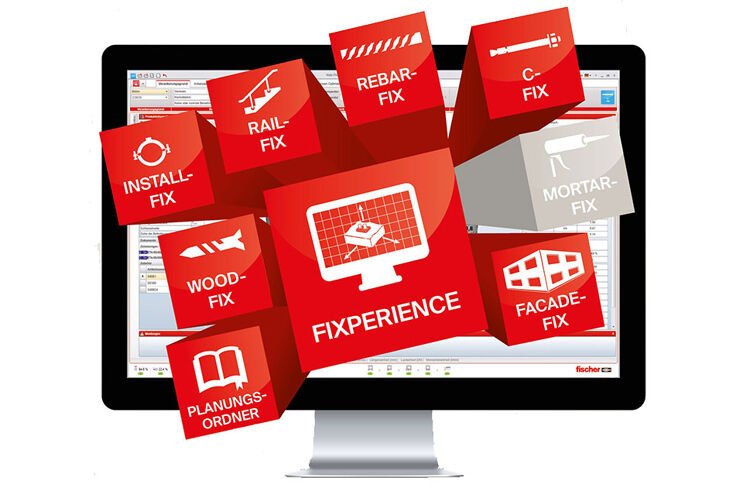Current standards and guidelines such as EN 1992-4 and ACI 318 have their limitations when it comes to designing fastenings in concrete. Spring models provide a solution to this, as they additionally consider the displacement and deformation of an anchorage in addition to transferrable forces. They also aren’t restricted to rectangular anchor layouts with a maximum 3x3 anchor configuration. fischer’s white paper provides all the answers to key questions surrounding the spring model design approach:
Download whitepaper
The current methods for the design of anchorages given in the codes are deemed valid only if the baseplate is sufficiently stiff. The quantification of the required stiffness of the baseplate is one of the most discussed topics in the code committees since several years. The use of spring models can offer an innovative solution to this problem. The design of the anchorage as well as the baseplate can be optimized using linear spring models. Nonlinear spring models automatically account for the stiffness of the baseplate as well as the anchor stiffness within the linear and nonlinear range, thereby providing a direct calculation for the resistance of the anchor group. Therefore, with the nonlinear spring modelling approach it is possible to perform realistic calculations for anchorages that lie beyond the scope of the CC Method.

It is a great leap forward to perform displacement-based nonlinear analysis using the spring model, which offers engineers unlimited possibilities for safe and reliable anchorage design
Knowledge transfer through scientific publications and open discussions with experts and end users are essential for us to implement innovative approaches in design.
When it comes to the geometry of base plates in particular, standards such as EN 1992-4 have their limitations. Spring models will therefore play a major role in future fastening technology.
FiXperience Online with the integrated spring model is just one of many components within the context of digital transformation. fischer is also advancing additional digital solutions for its customers with BIM Engineering.
Verification is required to prove that a selected product is suitable for the required load in order to prevent an anchor from failing. This makes simple design software for planners, structural engineers and construction engineers an essential.
Fixperience undergoes continuous development to meet the design standards and requirements of planners and structural engineers. The new Norm EN 1992-4 standard has already been fully integrated into C-Fix-Online.
Finite element modules have also been implemented into the latest version and is useful to check the sufficiency of the baseplate’s stiffness with the help of the linear spring model. The base plate stiffness can then be optimised, for example, by applying additional stiffeners. The non-linear spring model will be implemented in the upcoming versions of C-Fix Online. The “spring model” module is available exclusively in the online version.
